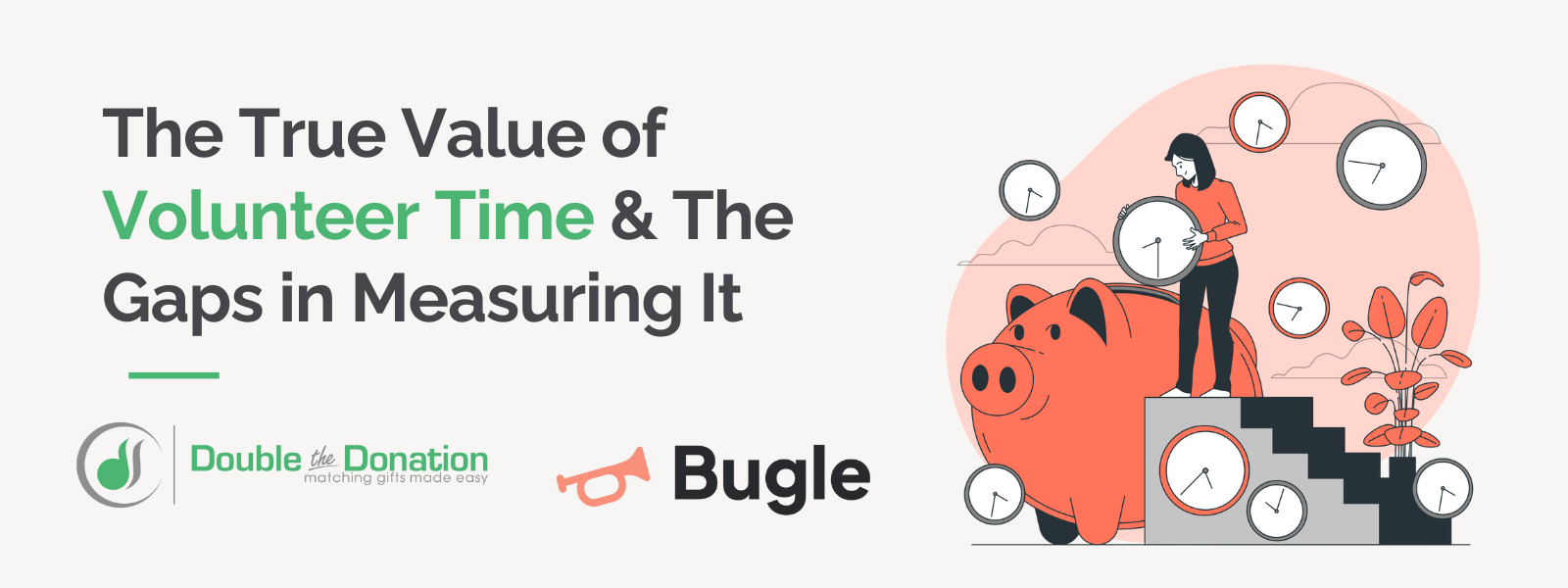Volunteers are the lifeblood of the nonprofit sector. They bring skills, time, passion, and community connection—often without asking for anything in return. But when it comes to quantifying the true value of that time, most organizations fall short. Not because they don’t care, but because it’s
hard.
Between limited tracking systems, evolving definitions of “impact,” and differing perceptions among funders, the nonprofit world faces a serious challenge in which we ask ourselves:
How do we capture the real value of volunteer work, and how can we communicate it effectively?
In this post, we’ll explore why measuring volunteer impact is so complex, how organizations are currently approaching it, what critical gaps remain, and how we can begin telling a more powerful story—one that reflects the
real worth of volunteerism, especially in the context of
corporate volunteerism and beyond.
The Gaps This Leaves Behind
So what’s missing from the current landscape of volunteer measurement?
1. A Clear Link Between Time and Impact
If 10 volunteers serve 100 hours sorting food at a pantry, what’s the real-world result? Was it 500 more families served? Reduced food waste? Freed up staff capacity for fundraising? These are the outcomes funders and stakeholders care about, but they’re often missing from reports.
2. Inconsistency in Data Collection
Organizations that rely on sign-in sheets, spreadsheets, or outdated databases often underreport volunteer contributions—
especially when volunteers serve remotely or informally. This leads to an underrepresentation of the true scale of support provided.
3. Limited Investment in Volunteer Infrastructure
The Points of Light report also points to a striking discrepancy: while nonprofits say volunteers are valuable, they underinvest in
systems, staff, and strategies to manage them effectively. This gap between
perceived value and
actual investment weakens the case for volunteerism at the leadership and funder level.
4. Disconnect Between Nonprofits and Funders
Perhaps most telling: nonprofits and funders don't always agree on the value of volunteers. Funders may view volunteer programs as peripheral rather than central, in part because nonprofits struggle to tell a compelling, data-backed story about volunteer impact. The result? Missed opportunities for funding, support, and recognition.
Bridging the Gap: Telling a Better Story
To elevate the value of volunteer time, nonprofits must shift from tracking hours to demonstrating impact. Here’s how:
1. Pair Hours with Outcomes
Don’t just say, “Volunteers served 2,000 hours.” Say, “Volunteers contributed 2,000 hours this year, enabling our staff to expand tutoring to 150 additional students and reduce program waitlists by 30%.”
Wherever possible, translate hours into concrete outputs and outcomes. This helps connect the dots between effort and effect.
2. Use Storytelling Strategically
Data alone isn’t enough. Combine quantitative stats with qualitative stories to bring volunteer contributions to life.
For example:
“When a team from Acme Corp volunteered at our shelter, they didn’t just repaint the walls—they helped create a more welcoming space for over 500 clients who pass through each month. One resident told us it was the first time a place felt like ‘home’ in years.”
Stories like this humanize the numbers and show the emotional and social value volunteers create.
3. Tie Volunteerism to Mission Advancement
Frame volunteers not as “extra hands” but as
mission multipliers. Show how they expand capacity, increase efficiency, improve services, and even unlock new funding streams.This framing is especially effective when talking to boards, funders, and
potential corporate partners.
Volunteer time doesn’t just generate impact—it can generate
revenue.Many companies offer
volunteer grants (also known as Dollars for Doers), where they donate money to nonprofits based on employee volunteer hours. For example, a company might donate $1,000 after an employee volunteers 20 hours, or $50 per hour volunteered.
Yet,
according to available data, billions in eligible volunteer grant funds go unclaimed each year—largely because nonprofits aren’t aware of the programs or don’t ask volunteers to check their eligibility.
By promoting volunteer grants as part of your program strategy, you can:
Encourage volunteers to check if their company offers a program. Tools like
Double the Donation Volunteering can help make this process a seamless one.
By doing so, nonprofits can better advocate for the role volunteers play—not just in supporting operations, but in advancing the mission itself.
Wrapping Up
Volunteer time is more than a warm gesture. It’s talent, commitment, and power—all generously given. But until nonprofits close the gap between perception and measurement, much of that value will remain invisible to funders, partners, and even the volunteers themselves.
By adopting a more holistic, impact-driven approach to measuring and communicating volunteer value—and leveraging corporate volunteerism and volunteer grants—organizations can finally start telling the whole story.
